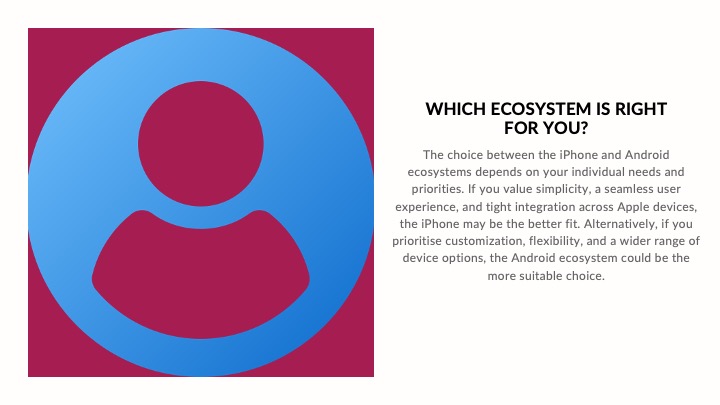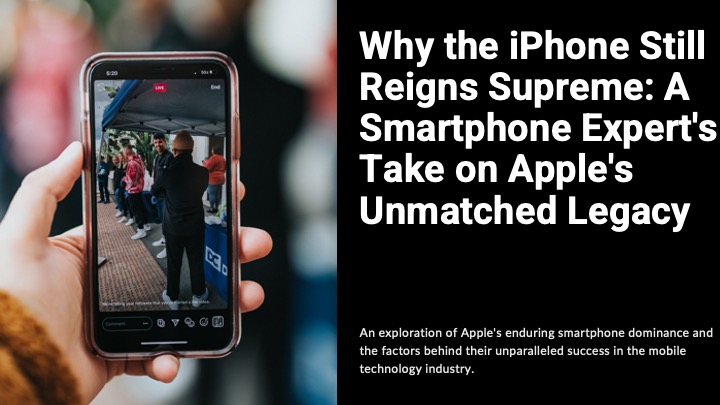Choosing a new smartphone can be overwhelming. With countless options flooding the market, it’s easy to get lost in a sea of specs and features. This guide is your lifeline, designed to help Aussies navigate the smartphone jungle and find the perfect device, whether you’re a first-time buyer, upgrading from an older model, or seeking a phone for specific needs.

Introduction
Before diving into the specifics, let’s outline the key factors to consider when choosing your ideal smartphone:
- Budget: Determine how much you’re willing to spend.
- Operating System: Choose between Android and iOS.
- Screen Size and Quality: Consider the display size, resolution, and technology.
- Camera Quality: Evaluate the camera specs and features for your photography needs.
- Battery Life: Assess the battery capacity and charging speeds.
- Performance: Consider the processor, RAM, and storage for smooth operation.
- Design and Durability: Factor in size, weight, build quality, and water resistance.
- Other Features: Think about 5G connectivity, audio quality, security features, and any special features you might need.
Types of Smartphones
Smartphones cater to various needs and priorities. Here are some common categories:
- Best Overall: Flagship phones offering the best performance, features, and design (e.g., Samsung Galaxy S24 Ultra, iPhone 16 Pro Max).
- Best Budget: Affordable phones that offer good value for money without compromising essential features (e.g., Google Pixel 7a, Samsung Galaxy A54).
- Best Camera: Phones with exceptional camera systems for photography enthusiasts (e.g., Google Pixel 8 Pro, Vivo X90 Pro).
- Best for Gaming: Phones with powerful processors and high refresh rate displays for smooth gaming (e.g., Asus ROG Phone 7, Nubia RedMagic 8S Pro).
- Best for Battery Life: Phones with large batteries and optimised software for extended usage (e.g., Asus Zenfone 10, iPhone 14 Plus).
Key Features and Specifications
Let’s break down the essential specs:
- Operating System (OS):
- Android: Offers more customisation options, a wider range of devices at various price points, and open access to apps.
- iOS: Known for its user-friendly interface, strong ecosystem of apps and accessories, and timely software updates.
- Display:
- Screen Size: Measured diagonally in inches (e.g., 6.1 inches, 6.7 inches).
- Resolution: Higher resolution (e.g., Full HD+, Quad HD+) means sharper images.
- Refresh Rate: Higher refresh rates (e.g., 90Hz, 120Hz) result in smoother scrolling and animations.
- Panel Types: AMOLED displays offer vibrant colours and deep blacks, while LCDs are generally more affordable.
- Processor: The brain of the phone, responsible for its speed and performance. Popular manufacturers include Qualcomm (Snapdragon), Apple (A-series chips), and MediaTek.
- RAM: Random Access Memory, which determines how many apps and tasks the phone can handle simultaneously. More RAM (e.g., 8GB, 12GB) means smoother multitasking.
- Storage: Internal storage (e.g., 128GB, 256GB) determines how much data you can store on the phone. Some phones offer expandable storage via microSD cards.
- Camera:
- Megapixels: Higher megapixel count generally means more detail in photos, but other factors like sensor size and image processing are also important.
- Aperture: A lower aperture number (e.g., f/1.7) allows more light to enter the sensor, resulting in better low-light photos.
- Sensor Size: A larger sensor generally captures more light and detail.
- Optical Zoom: Allows you to zoom in on subjects without losing image quality.
- Camera Features: Look for features like night mode, portrait mode, and video stabilisation.
- Battery:
- Battery Capacity: Measured in milliampere-hours (mAh). A higher mAh generally means longer battery life.
- Charging Speeds: Faster charging (e.g., 45W, 80W) allows you to top up the battery quickly.
- Design and Durability:
- Size and Weight: Consider how comfortable the phone is to hold and carry.
- Build Materials: Look for premium materials like metal and glass for a more durable and stylish design.
- Water Resistance: An IP rating (e.g., IP68) indicates the phone’s resistance to water and dust.
- Other Features:
- 5G Connectivity: For faster download and upload speeds.
- Wi-Fi Standards: Wi-Fi 6E offers faster and more stable wireless connections.
- Audio Quality: Look for phones with stereo speakers and support for high-quality audio codecs.
- Security Features: Fingerprint sensors, facial recognition, and secure folders enhance security.
- Special Features: Some phones offer unique features like stylus support (e.g., Samsung Galaxy S24 Ultra) or foldable designs (e.g., Samsung Galaxy Z Fold4).
Budget Considerations
- Budget (under $500): You can find decent phones with good basic features. Expect some compromises on camera quality, performance, and design.
- Mid-Range ($500 – $1000): Offers a good balance of features and performance. You’ll find phones with good cameras, decent processors, and attractive designs.
- Flagship (over $1000): The best of the best, with top-of-the-line specs, premium designs, and the latest features.
Brand Recommendations
- Apple: Known for its premium iPhones with a user-friendly iOS ecosystem.
- Samsung: Offers a wide range of Android phones, from budget-friendly to flagship models with innovative features like foldable displays and S Pen support.
- Google: Produces Pixel phones known for their clean Android experience, excellent cameras, and timely software updates.
- OnePlus: Offers flagship-level specs and features at more competitive prices.
- Xiaomi: Provides a variety of phones with good value for money, often featuring impressive camera systems and fast charging.
Tips for Choosing
- Prioritise your needs: Identify the features that are most important to you, whether it’s camera quality, battery life, or performance.
- Read reviews: Check out reviews from reputable sources to get an idea of a phone’s strengths and weaknesses.
- Compare specs: Compare the specs of different phones side-by-side to see how they stack up.
- Visit a store: Try out phones in person to get a feel for their size, design, and user interface.
- Consider future needs: Think about how your needs might change in the next few years and choose a phone that can adapt.
Conclusion
Finding the perfect smartphone is a journey, but with the right information and guidance, you can confidently make a decision that you’ll be happy with for years to come. Consider your priorities, explore your options, and don’t hesitate to ask for help from experts or tech-savvy friends. Happy phone hunting!




